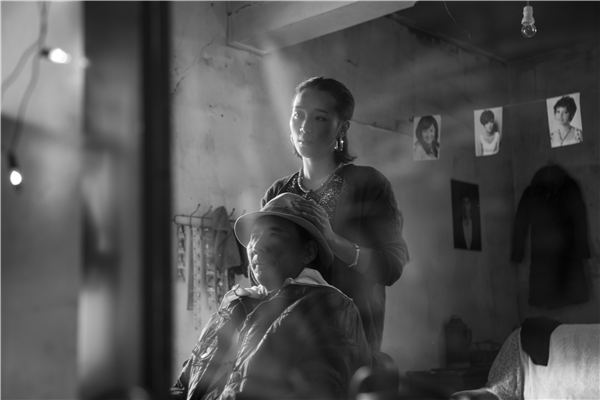 |
|
A scene from the Tibetan-language movie Tharlo, directed by Pema Tseden. |
Many of Pema Tseden's Tibetan-language novels have been translated into English, French, German and Japanese, among other foreign languages.
His Silent Holy Stone (2005), which is considered to be the first Chinese movie in Tibetan language, drew a lot of international attention.
Set in the rural areas of Northwest China's Qinghai province that is home to many Tibetans, Tharlo narrates the story of its middle-aged protagonist, who leads a tranquil life with his flocks of sheep and practices Buddhism, until he falls for a beautiful woman and his life changes for the worse.
Different from most movies that feature picturesque scenes and religious mysticism of Tibet, Tharlo shows a remote town that could have been anywhere in the world. In the movie, middle-aged locals are seen struggling with changes in society brought by modernization and urbanization, while the youth are readily taking to them.
In a scene, Tharlo wants to entertain his love interest with folk songs, but the young woman instead opts for hip-hop music.
According to a review in Yangtze River Daily, Tharlo reflects the nostalgia of the Tibetan people, who have left their remote hometowns for further education or better working conditions in big cities, but miss those they've left behind.
"An area inhabited by Tibetans is not a hinterland and neither an isolated heaven for novelty hunters," the newspaper writes.
|
|
|
|
|
|
|
|
